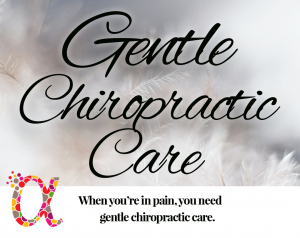Gentle chiropractic care is ideal for seniors, providing safe, effective relief for aging joints. As we age, our bodies go through natural changes that affect flexibility, balance, and joint health. Many seniors live with arthritis, osteoporosis, or chronic back and neck pain that interferes with everyday activities. The good news is, pain and stiffness don’t […]
Natural Pain Relief for Joints: How Chiropractic Care Helps
Chiropractic care can provide natural pain relief for joints. If joint pain is limiting your day, whether it’s your lower back, neck, hips, knees, or shoulders, chiropractic care offers a drug-free path that focuses on restoring movement, easing pain, and helping you function better. Below is a research-grounded look at what chiropractors do, how it helps joints, and what the evidence says.

When chiropractic care fits best
- You prefer natural pain relief and want to minimize medication where appropriate.
- Your joint pain worsens with stiffness/inactivity and improves with movement.
- Imaging (if done) shows degenerative changes but no urgent surgical red flags.
- You’re ready to do the homework: exercises and habit changes multiply the benefit.
Advanced Wellness Solutions is accepting new patients.
Call (772) 403-7640 to schedule your appointment.
We accept most major health insurance plans and Medicare.
 What chiropractors actually do to provide natural pain relief for joints.
What chiropractors actually do to provide natural pain relief for joints.
Chiropractors don’t just “crack backs.” A typical plan can include:
- Spinal and extremity joint manipulation or mobilization to improve joint mechanics and reduce pain.
- Soft-tissue work to calm overactive muscles and reduce guarding.
- Targeted exercise and movement retraining to build strength and stability around painful joints.
- Lifestyle coaching (ergonomics, activity pacing, sleep, and stress) to reduce flare-ups.
Evidence for natural pain relief for joints and spine-related joint pain (low back and neck)
Back pain is the most studied area. The American College of Physicians includes spinal manipulation among recommended non-drug options for acute, subacute, and chronic low back pain, alongside exercise, massage, and acupuncture. 1
Systematic reviews show spinal manipulative therapy (SMT) provides similar pain and function improvements to other guideline-recommended treatments for chronic low back pain (like exercise or usual medical care), with small-to-moderate benefits for many patients. 2
For neck pain, newer meta-analytic evidence suggests SMT can reduce pain and disability and improve cervical range of motion in acute presentations, though results vary by study and technique. 3
What this means for you: If your primary joint pain is spine-related, chiropractic manipulation plus exercise and self-care ranks among evidence-supported, nonpharmacologic options.
 Evidence for natural pain relief for joints, peripheral joints (hips, knees, shoulders)
Evidence for natural pain relief for joints, peripheral joints (hips, knees, shoulders)
Manual therapy, the core skillset used by chiropractors, has supportive evidence in common peripheral joint problems:
- Knee osteoarthritis: Randomized trials show manual therapy combined with supervised exercise improves pain and function and may delay surgical consideration in some patients. 4
- Hip/knee OA (broader): Adding manual therapy and exercise to usual care benefits symptoms versus usual care alone. 5
What this means for you: For knee or hip OA, you’re most likely to benefit when manipulation/mobilization is paired with a progressive exercise program.
 Safety: what to know
Safety: what to know
Most adverse effects after manipulation are mild and temporary (soreness, stiffness). Serious complications are rare, but risk estimates vary widely because events are uncommon and hard to measure. Reviews note rare vascular events (e.g., vertebral artery dissection) associated with cervical manipulation; clinicians should screen for red flags and use shared decision-making. 6
Practical takeaways for safer care
- See a licensed chiropractor who performs a thorough history and exam.
- Expect conservative adjustments and emphasis on exercise and self-management—key to durable results. Gentle chiropractic care delivers exceptional results without high-velocity thrusts on every visit.
- If you have a new severe headache/neck pain, neurological changes, or symptoms after trauma, seek urgent evaluation before manipulation.

What a joint-focused chiropractic plan can look like
- Assessment: History, movement screen, orthopedic/neurological tests; imaging only when indicated.
- Relief phase: Gentle mobilization or SMT plus soft-tissue techniques to decrease pain and restore motion.
- Restore & retrain: Progressive strengthening, mobility drills, and motor-control work specific to your joint and goals.
- Load & lifestyle: Activity modifications, ergonomics, walking program, and flare-up plans.
- Step-down: Space visits as self-management carries more of the load.
A quick, research-informed checklist
- Start with conservative care. SMT and exercise are guideline-supported for back pain; manual therapy and exercise have evidence for knee/hip OA. 7
- Combine approaches. Manipulation works best alongside exercise and education—not as a standalone cure. 8
- Track function, not just pain. Look for gains in walking distance, sit-to-stand ease, and daily activity confidence within 2–6 weeks.
- Reassess and escalate thoughtfully. If progress stalls, your chiropractor can coordinate with your primary care clinician or refer you for additional options.
Bottom line
For many people with joint-related pain—especially in the spine and in knee/hip osteoarthritis—chiropractic care that integrates manipulation plus targeted exercise and self-management offers a credible, research-supported route to natural pain relief and better function. It’s not a magic bullet, but it can be a valuable pillar in a conservative, whole-person plan. 9
This article is educational and not a substitute for personalized medical advice. If you’re experiencing red-flag symptoms (trauma, fever, unexplained weight loss, significant weakness/numbness, loss of bladder/bowel control), seek urgent care.


